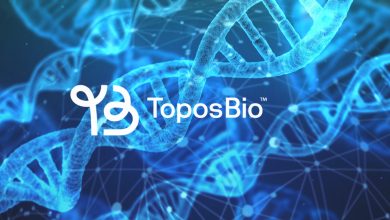
As we advance deeper into 2025, artificial intelligence has become the operational backbone of modern enterprises. Success in this AI-driven world depends on two critical foundations: organizational AI fluency and robust network infrastructure capable of supporting intelligent systems at scale.
The companies thriving today have mastered both elements. They’ve built AI-literate workforces that can understand, apply, and govern artificial intelligence effectively, while simultaneously investing in network architectures that can handle the massive data flows, real-time processing demands, and distributed computing requirements that AI applications demand.
The Evolution from Tools to Infrastructure
The transformation of AI from tactical tool to strategic infrastructure represents one of the most significant shifts in modern business operations. In the early 2020s, most organizations approached AI through isolated implementations: chatbots for customer service, recommendation engines for e-commerce, or basic automation for routine tasks.
Today’s AI-first organizations have moved beyond piecemeal deployments to create integrated, intelligent systems that permeate every aspect of their operations. AI now powers real-time logistics optimization, predictive maintenance across manufacturing floors, hyper-personalized marketing campaigns, and sophisticated threat detection systems.
This evolution has profound implications for how companies must think about both their human capabilities and their technical infrastructure. When AI becomes infrastructure, it requires infrastructure-level thinking about reliability, scalability, security, and performance.
The Critical Role of Network Connectivity
One of the most overlooked aspects of AI implementation is the network infrastructure required to support these intelligent systems. Modern AI applications generate and consume data at unprecedented scales, requiring network architectures that can handle massive throughput, ultra-low latency, and distributed processing across multiple locations.
Consider a manufacturing company implementing predictive maintenance AI across multiple facilities. The system must process sensor data from thousands of machines in real-time, analyze patterns using distributed computing resources, and deliver actionable insights to maintenance teams across different time zones.
The network demands of AI extend far beyond simple bandwidth requirements. AI systems often require:
Ultra-low latency connections for real-time decision-making applications, particularly in autonomous systems where milliseconds matter. A logistics company’s AI-powered routing system must process traffic data, weather conditions, and delivery constraints instantly to optimize routes dynamically.
Massive data throughput capabilities to handle the continuous flow of information between AI systems and data sources. A retail organization’s AI personalization engine might analyze millions of customer interactions simultaneously, requiring network infrastructure that can support these data-intensive operations without degradation.
Distributed processing support as AI workloads increasingly span multiple locations, from edge devices to cloud data centers. This requires network architectures that can seamlessly connect distributed computing resources while maintaining consistent performance and security standards.
Resilient, self-healing network capabilities because AI systems operate continuously, any network disruption can have cascading effects across multiple business processes.
Defining AI Fluency in the Modern Enterprise
While robust network infrastructure provides the technical foundation for AI operations, organizational AI fluency determines whether companies can actually leverage these capabilities effectively. AI fluency encompasses three critical dimensions:
Understanding represents the foundational layer of AI fluency. This isn’t about turning every employee into a data scientist but rather ensuring that teams across the organization grasp what AI can and cannot do, how it makes decisions, and where it fits within their specific roles and responsibilities.
Application involves the practical deployment of AI tools and systems within specific business contexts. This requires combining technical capabilities with domain expertise to create AI solutions that address real business challenges.
Governance ensures that AI systems operate transparently, fairly, and in compliance with evolving regulatory frameworks. Organizations must establish clear protocols for AI oversight, regular auditing of AI decision-making, and mechanisms for addressing bias or errors in AI systems.
The Network-AI Fluency Connection
The relationship between network infrastructure and AI fluency is more interconnected than many organizations realize. AI fluency isn’t just about understanding algorithms it’s about understanding how intelligent systems interact with the broader technology ecosystem, including network infrastructure.
Teams that understand AI’s network requirements can make better decisions about system design, deployment strategies, and performance optimization. They can anticipate bottlenecks, plan for scalability, and design AI implementations that work effectively within existing network constraints while identifying opportunities for infrastructure upgrades.
Building Enterprise AI Fluency
Developing organizational AI fluency requires a systematic approach that goes beyond traditional training programs. The most successful organizations treat AI fluency as a core competency that must be embedded throughout their culture and operations.
Executive leadership must drive AI fluency from the top, demonstrating clear understanding of AI’s strategic implications and making informed decisions about AI investments, risks, and governance.
Role-based learning paths ensure that different teams receive AI education tailored to their specific needs and responsibilities. Sales teams need to understand how AI enhances customer relationship management, while operations teams need to grasp how AI optimizes supply chain management.
Cross-functional collaboration breaks down silos between technical and business teams, creating shared understanding of AI capabilities and requirements.
Hands-on experimentation provides safe environments where teams can interact with AI systems, understand their capabilities and limitations, and develop practical skills for AI application.
Network Infrastructure Requirements for AI-Driven Organizations
As organizations become more AI-fluent, they quickly discover that their existing network infrastructure may not be adequate for supporting sophisticated AI applications. Upgrading network connectivity becomes a strategic imperative.
Bandwidth scaling must accommodate the massive data flows generated by AI systems. A single AI application might generate terabytes of data daily, requiring network infrastructure that can handle these volumes without affecting other business operations.
Edge computing capabilities become essential as AI applications require real-time processing closer to data sources. This might involve deploying AI processing capabilities at retail locations, manufacturing facilities, or distribution centers.
Cloud integration must be seamless, as many AI applications leverage cloud-based machine learning services while integrating with on-premises systems.
Security enhancement becomes more complex as AI systems create new attack vectors and require protection of sensitive AI models and training data.
The Competitive Advantage
Organizations that successfully combine AI fluency with robust network infrastructure gain significant competitive advantages. They can deploy AI applications faster, scale intelligent systems more effectively, and respond to market changes more dynamically than their less-prepared competitors.
These organizations often become centers of innovation within their industries, attracting top talent and pioneering new AI applications that create market differentiation. They can also respond more effectively to disruptions, using AI-powered insights and analytics to adapt their strategies and operations in real-time.
Looking Forward
As we look toward the remainder of 2025 and beyond, the importance of AI fluency and network infrastructure will only continue to grow. AI systems are becoming more sophisticated, more autonomous, and more integrated into business operations.
The call to action for modern enterprises is clear: invest in both AI fluency and network infrastructure as complementary strategic priorities. Don’t just build AI capabilities build the organizational knowledge and technical foundation necessary to leverage those capabilities effectively.
Success in the AI-driven economy isn’t just about having access to the latest algorithms or the most powerful computing resources. It’s about building organizations that can understand, apply, and govern AI effectively while maintaining the technical infrastructure necessary to support these capabilities at scale. The time to begin this transformation is now.



